|
TennisOne Lessons
The "Advanced Foundation"Development of the Serve and the Volley within the Advanced FoundationBy David W. Smith (Excerpted from his book, Tennis Mastery, due out June, 2003) The Advanced Foundation is a concept of teaching tennis utilizing methods that are non-transitional in their approach. That is, unlike many current tennis methodologies, the Advanced Foundation does not teach techniques that must change for a player to develop past a rudimentary point of progression. For the past twenty to thirty years a great majority of books on tennis as well as many tennis teaching professionals have recommended techniques that favor the acquisition of simple skills in order to get students "playing tennis" as quickly as possible. While this approach seemed to appease the ego-sensitive needs of an ever growing "short-attention span" population of players, it has proven to be detrimental to overall player development. We now have an estimated 9 million players (out of approximately 12 million U.S. players) who are languishing at the 3.0 and 3.5 levels…not just for years or even decades… but for entire lifetimes!
As mentioned in my previous article, the contributing factors for this prohibitive progression were based on several human limitations as well as some natural or physical properties associated with these techniques. These include:
Example: Learning the serve or the forehand volley first with an Eastern Forehand grip will make learning the generally recognized advanced grip, the continental grip, necessary for advancement very difficult.
b) limit the ability to react to hard hit balls or fast-paced rallies close to the net (due to the necessity of changing grips during such quick exchanges), and c) limits the ability to hit angle volleys and drop shots.
Example: Learning the serve with an Eastern forehand grip will severely limit the ability of players to develop the proper spin necessary for more aggressive serves. This almost always results in players dinking their second serves and usually develops an inconsistent first serve as well.
Example: Players may know their one or two-handed backhand is a dink stroke due to poor form. However, even as they understand this fact, (they may even be familiar with proper one or two-handed backhand techniques), they choose to play competitive matches only using their limiting—but comfortable—backhand. (And probably still lose…or, at least, lose to players who will always be better than them!) Advantageous Stroke PatternsIt has been most interesting to compare the great number of players who are stuck at mediocre levels to those who move on to higher and higher levels of skilled play. These observations have led my development of "Advantageous Stroke Patterns" that do five things for the vast majority of players:
Core Stroke Patterns Within these Advantageous Stroke Patterns there are Core Stroke Patterns (CSP's), individual stroke components that are identifiable even among top players with significant idiosyncrasies. CSP's are not newly invented stroke patterns that have never been considered. On the contrary, these methods have been around for a long time…but were seemingly abandoned (as initial teaching methods) when tennis teaching philosophies changed from a challenging mentality to an immediate gratification one. Volley
The transitional method would be to use the more comfortable Eastern forehand and backhand grips to hit the volley for beginners. These grips are arguably easier to gain some confidence in hitting balls. The Eastern grips, however, create several problems that prevent players from developing better volleys as well as handling more difficult shots from better opponents. (These problems were discussed in my articles on the Forehand Volley and the Backhand Volley found in the Lesson Library.) The Advanced Foundation teaches the continental grip for both the forehand and backhand volley from the start. While some high-level players can be seen deviating slightly from the continental grip (usually on their forehand volley), virtually all advanced players use the continental for all their backhand volleys, low forehand volleys, as well as for most slice approach shots. Even though there might be a small percentage of teaching pros that express a desire for all players to use the Eastern grips, it is clear the majority of top players utilize the continental grip as their foundation grip. The vast majority of books that correctly recognize this concept, (players who wish to continue to remain competitive on their volley should at some point learn the continental grip), further support this concept.
Key Position Points for the Volley
ServeLike the volley, most books recommend transitional learning for the serve. However, players are often unable to "transition" from the beginner Eastern forehand grip to the Continental grip once they start playing competitive tennis. The comfort and familiarity of the beginner grip usually results in players resorting back to this grip and serve.
Players who want to be competitive on their first and, more importantly, their second serve, should learn the spin serve using the continental grip the moment they start to learn the game. The most important part of most players' development as it relates to the serve is the ability to integrate proper spin on the ball. The foundation of all spin serves, in my opinion, is the slice serve. Learning to slice the ball naturally leads to the development of other spin serves such as topspin or kick serves. When players learn flat serves first, a) they are inclined to use the Eastern grip more, and b) they don't develop an understanding of spin serves as easily. I don't recommend teaching a specific backswing pattern until the student has learned what the racquet is doing at contact. Often, players who concentrate on a specific backswing will not associate the action of the racquet at contact. If the player learns what the racquet does at contact first, the swing pattern almost takes care of itself. In fact, if you look at the pros, the one thing that generally separates each server is the backswing. They almost all hit the ball with the racquet doing nearly the same thing and all use essentially the same grip. But, individuality clearly exists on the backswing. (One could argue that there is a difference between the "Pin point" stance and the "Platform" stance that John Yandell describes in his "Myth of the Pin Point Stance" article.) While I agree this is a difference, I don't believe it has as much effect on the overall serve progression among most students.
Key Position Points
Exceptions to the RuleIt must be understood that the Advanced Foundation is a program for players to learn the game from a standpoint of progressive improvement. While other "foundation" patterns may work for a few individuals, the Advance Foundation works literally for all. I realize this is quite a bold statement. However, the Advanced Foundation allows players to evolve idiosyncrasies and personalized habits that follow those patterns which are recognized among skilled players. I don't think too many pros would teach stroke patterns that Francoise Durr utilized in becoming a French Open Champion back in 1967. However, there are a great number of skilled players who use stroke foundations within their own human-characteristics that clearly resemble other skilled players. And, perhaps most importantly, the progression-preventing transitional learning methods—or simply learning to appease the immediate ego, have clearly stifled many tennis competitors who may have had the potential to participate at far higher and more celebrated levels of play. Be assured there are many great teaching pros who recognize these tendencies and teach their own brand of quality tennis within these same, or very similar, foundations. My friend Holger Nickel, president of the Intermountain USPTA, reminded me recently that while the concept of this Advanced Foundation is quickly becoming highly recognized among both players and pros, many students "self-stagnate" themselves because they are not willing to learn. And this is so very true. The student is ultimately responsible to incorporate, practice, and compete with those strokes that give them the greatest chance at playing tennis at skilled levels.
David has taught over 3000 players including many top national and world ranked players. He can be reached at acrpres1@email.msn.com. |
|||||||||||||||||||||

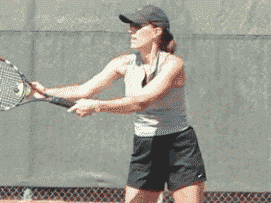
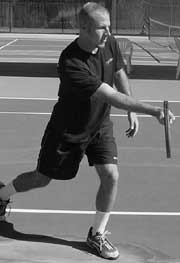
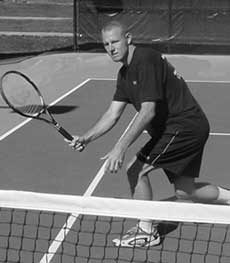
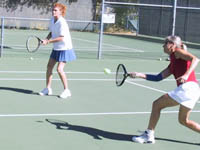
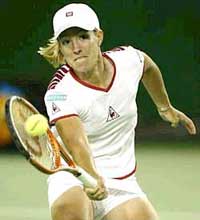
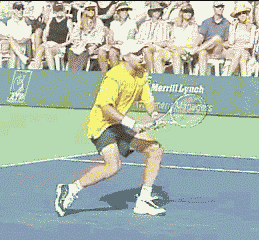
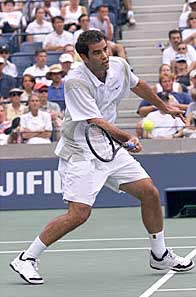
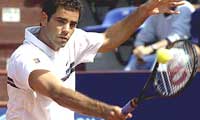
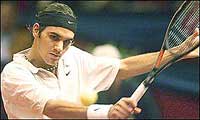
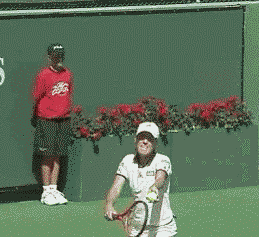
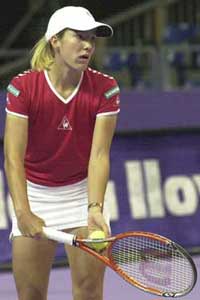

 Your comments are welcome. Let us know what you think about this article by
Your comments are welcome. Let us know what you think about this article by